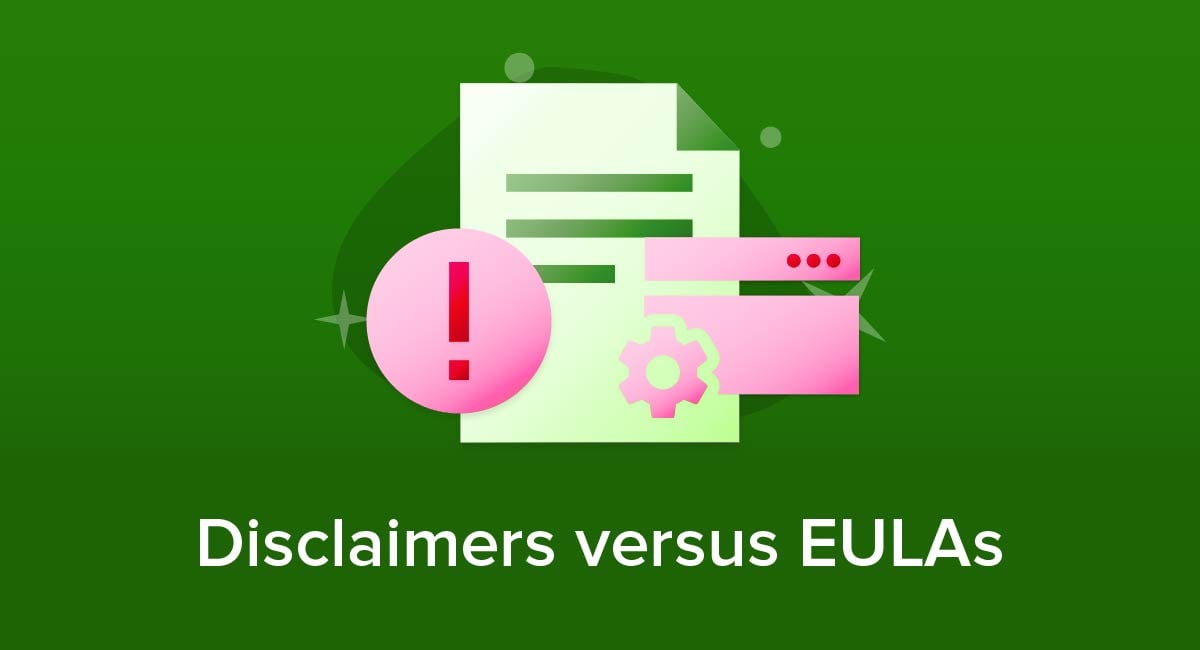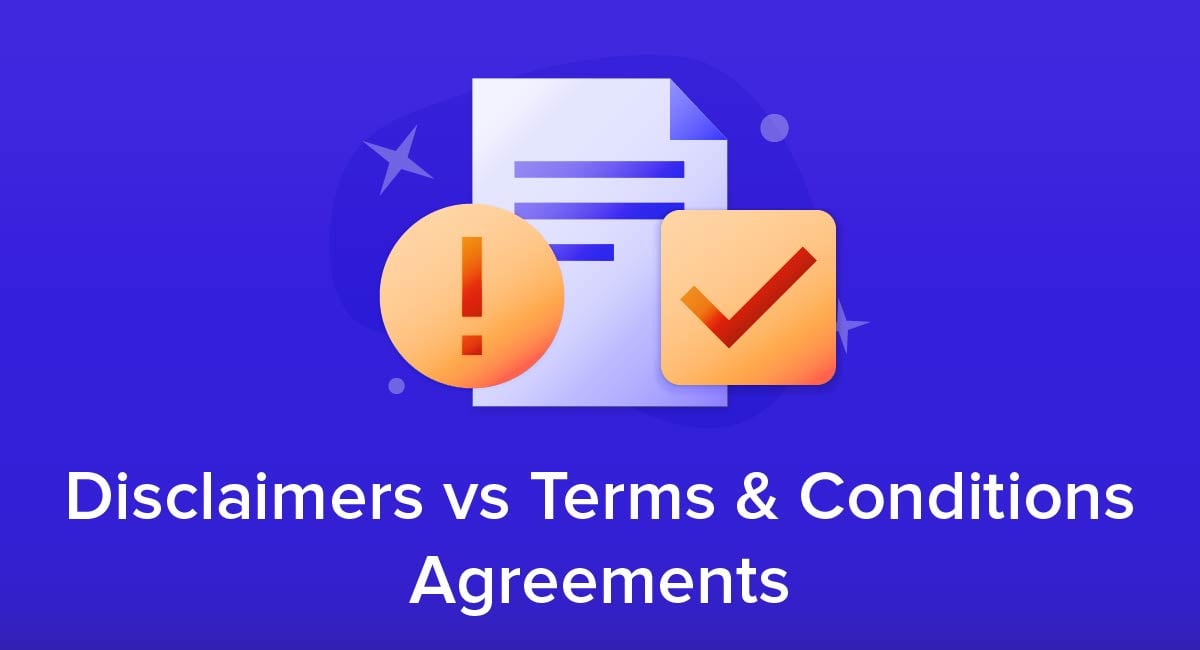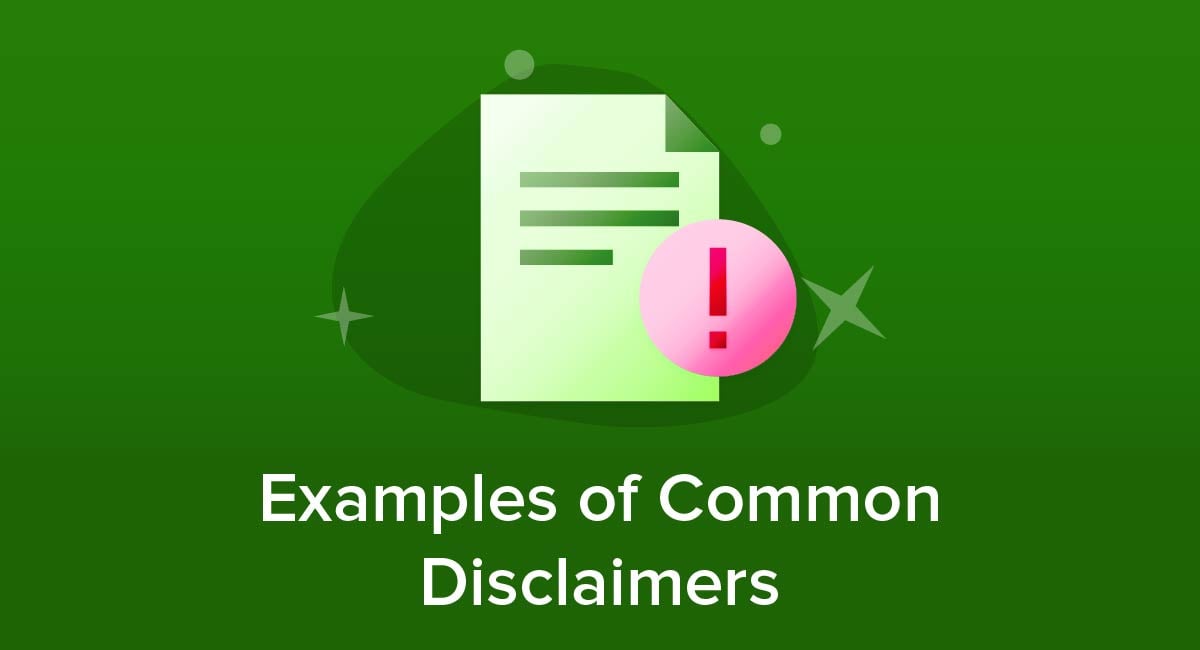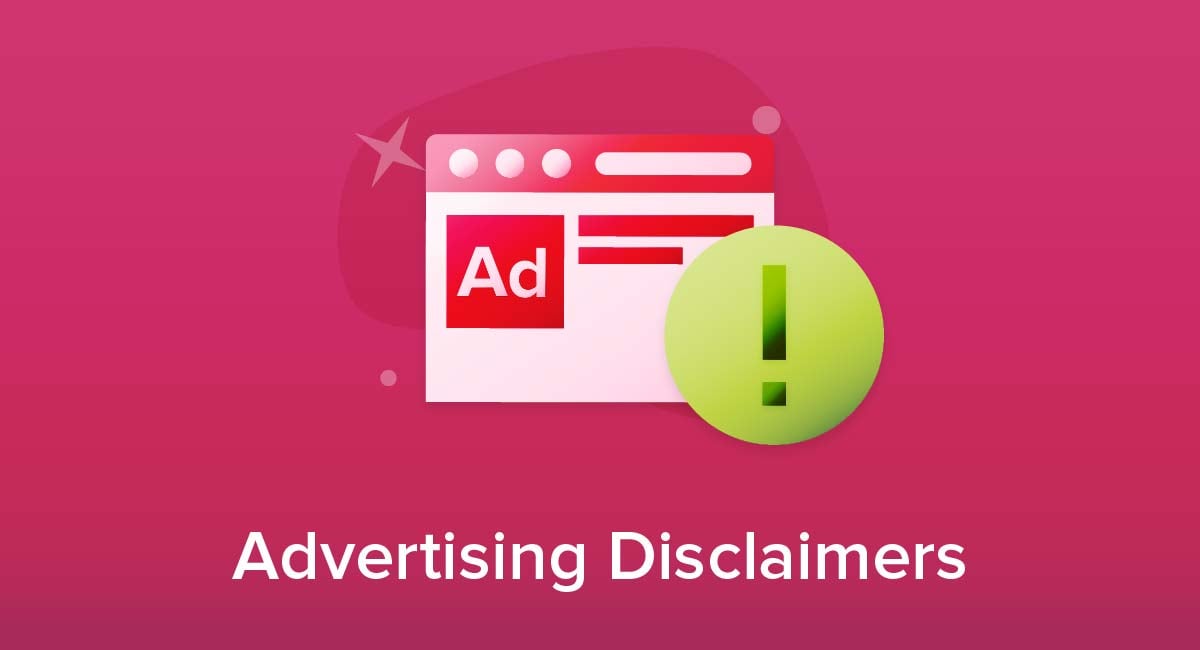
When you advertise a product or service, you must consider the risk of misleading people, even inadvertently. A disclaimer helps reduce the risk of people making incorrect assumptions that could lead to problems for you, them or both.
Some jurisdictions have legal requirements for specific advertising disclaimers. In other cases, a disclaimer is entirely voluntary but it makes sense to use one.
Here's what you need to know about these types of disclaimers and how to use them. We'll also look at some of the specific situations in which a disclaimer is required or necessary.
Our Free Disclaimer Generator is designed to help you comply with the requirements of various affiliate programs, such as Amazon Associates. It also includes various disclaimers like medical disclaimer, fitness disclaimer, website disclaimer and so on.
Just follow these few simple steps and generate a Free Disclaimer for your site or your app:
- Start by choosing the "Free Disclaimer Generator" on our site.
-
Then select where your Disclaimer will be used on:
-
Follow with adding your website/app information:
-
Enter the country and click on the "Next Step" button:
-
Continue with building your Disclaimer and answer on questions about your business from our wizard:
-
Now just enter your email address where you'd like your Disclaimer sent and click on the "Generate" button.
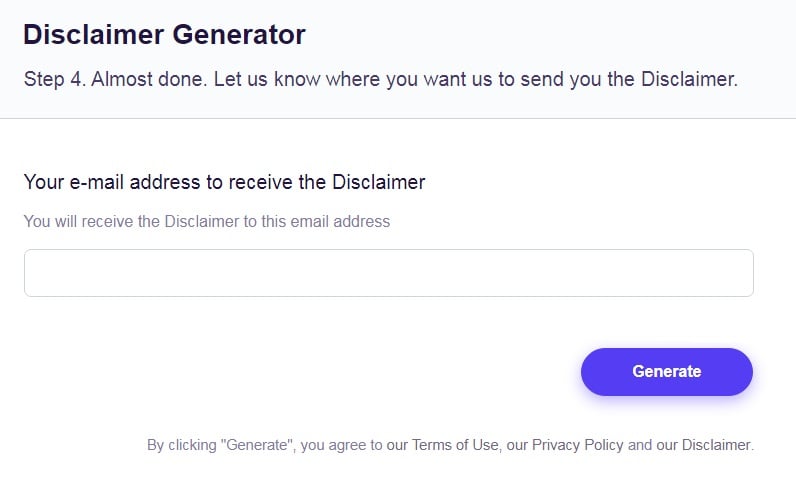
You're done! You can copy and paste your Disclaimer code into your website/app, or link to your hosted Disclaimer page.
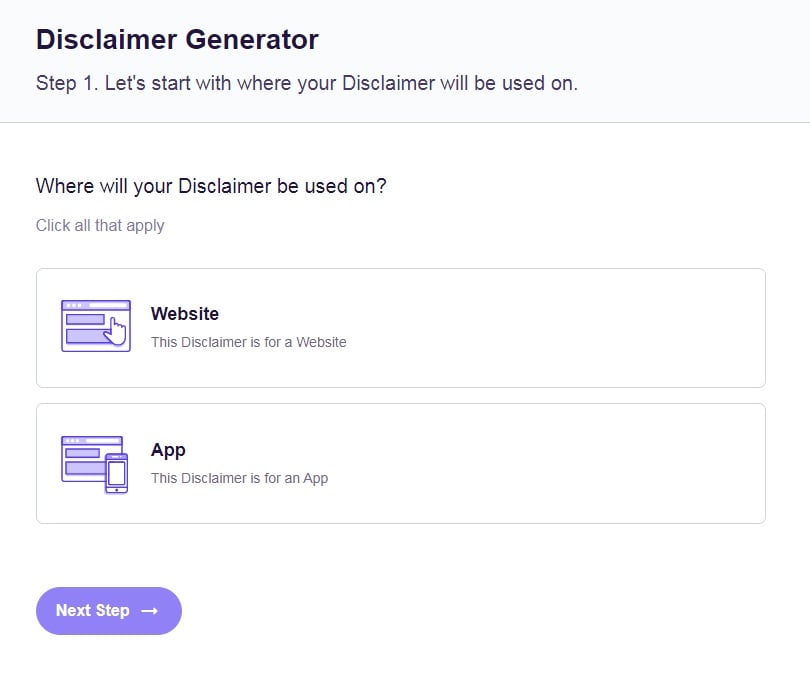
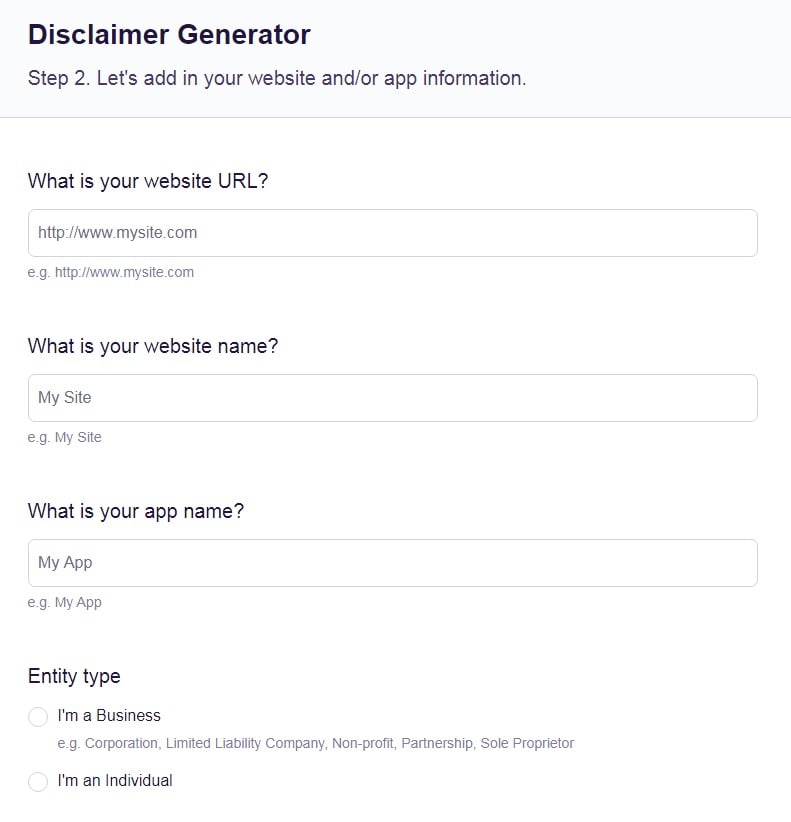
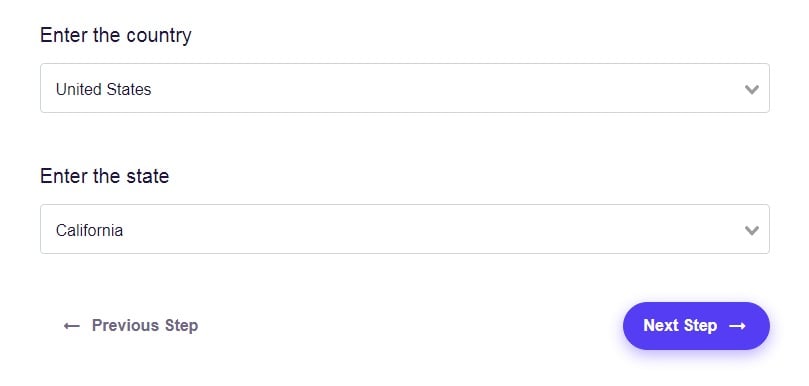
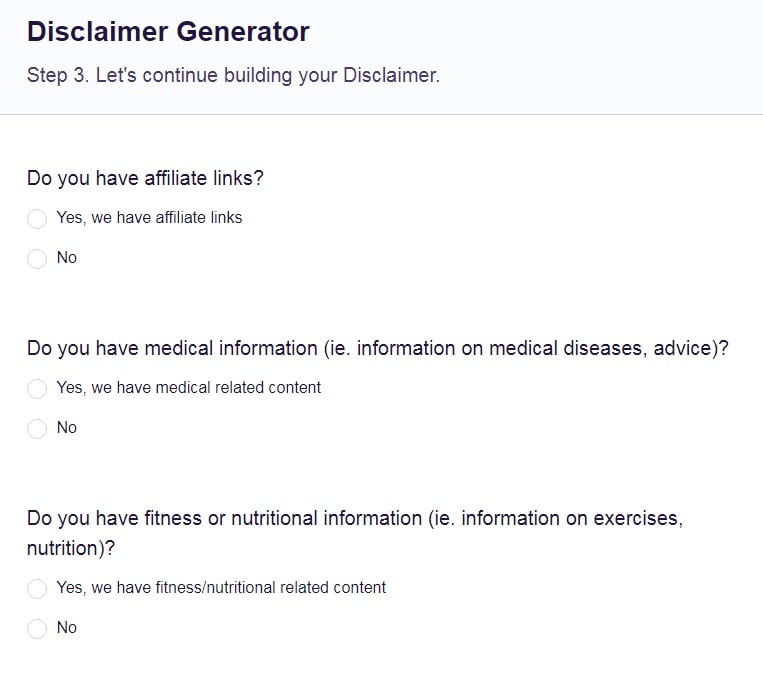
- 1. What is a Disclaimer?
- 2. FTC Requirements for Advertisements
- 2.1. Results Not Typical
- 3. YouTube Rules for Advertising Disclaimers
- 4. Paid Advertisements Disclaimer
- 5. Disclaimers for Specific Industries
- 5.1. Medical Ads
- 5.2. Political Ads
- 6. Affiliate Advertising: FTC Rules
- 7. How to Display Advertising Disclaimers
- 7.1. FTC Rules
- 7.2. FEC Rules
- 7.3. YouTube Rules
- 7.4. Summary
What is a Disclaimer?
A disclaimer is a short statement that works to inform the reader about something important.
In the case of advertising disclaimers, the disclaimer will disclose information that may be relevant to anyone considering purchasing the advertised product or service. For example, an advertising disclaimer on a weight loss supplement website may state that results stated in the ads are not typical and should not be expected.
As a general principle, you should use a disclaimer if any of the following apply:
- People might wrongly believe something after seeing an advertisement.
- This incorrect belief would have negative consequences for you, the person seeing the advertisement, or both.
- There's a significant risk that people would have the incorrect belief unless you specifically told them otherwise.
These incorrect beliefs could involve the content of an advertisement, the reason the advertisement appears, the organization responsible for the advertisement, or even whether or not something is an advertisement.
FTC Requirements for Advertisements

In the United States, the Federal Trade Commission oversees advertising. While the FTC has extensive rules and guidance, they boil down to a key requirement: advertisements "must be truthful, cannot be deceptive or unfair, and must be evidence-based."
"Truthful" and "evidence-based" should be relatively objective measures, but you may be uncertain what counts as "deceptive or unfair."
Some key points are:
- You don't have to intentionally try to deceive a customer for an ad to count as deceptive or unfair. It's the effect that matters.
- The rules are based on a hypothetical "reasonable" consumer. For example, an ad probably wouldn't be deceptive if somebody intentionally misinterpreted it.
- The rules apply most strictly to claims that are likely to affect whether or not somebody makes a purchase.
- The rules apply most strictly to claims that appear factual and objective, and that potential customers can't verify before a purchase. For example, saying a drink tastes great is more of a subjective point and is unlikely to be classed as deceptive.
- The FTC looks at the entire advertisement in context, not just individual parts.
- Claims about health, medicine and safety get extra scrutiny.
With these general guidelines, the FTC doesn't explicitly require disclaimers. However, a disclaimer may be the best or only way to include your chosen message in the advertisement without breaching the guidelines on being deceptive or unfair.
Such disclaimers could include:
- A statement of any significant restrictions or exceptions that apply.
- A clarification that you are not making an implied claim. The FTC gives the example of "ABC Mouthwash kills the germs that cause colds" as making an implied claim that the mouthwash prevents colds. You'll need a disclaimer to say otherwise if you can't back that up.
- Important details behind any headline claims. For example, if you use the slogan "two out of three dentists recommend our toothpaste" a reasonable consumer might assume this is based on a statistically representative survey across the dental industry. If this isn't the case, a disclaimer could detail exactly how you came up with the figure.
Vicks makes a claim about being the leading pharmacist recommended product, then adds a disclaimer to explain how it justifies this claim.

Results Not Typical
Historically, the FTC did allow advertisers to make claims about results consumers could get from a product or service, even if these weren't representative of the results most people would get. This was allowed when accompanied by a "results not typical" disclaimer.
Isagenix uses a disclaimer that gives specific typical results:

You can only use this type of "results not typical" disclaimer if you add additional information to disclose what exactly the typical results would be, such as in the example above.
YouTube Rules for Advertising Disclaimers

YouTube has specific rules requiring a disclaimer in some circumstances:
- Paid product placement: You have been paid to include a brand, message or product in your content.
- Endorsement: You have been paid to include a message that appears to be your opinion.
- Sponsorship: Somebody has paid some or all of your costs in producing content. Although you don't include the brand, message or product in the body of the content itself, you do still promote it in some way. For example, you may mention it at the start or end of the video.
YouTube has a specific settings option for videos that fall into any of these categories. We'll detail how to use this setting later in this article. However, for added trust and credibility, you could also give a disclaimer in the video itself or in the description text.
Board Game Gumbo makes clear the publisher supplied a review copy of the featured game:

Paid Advertisements Disclaimer
If you are a publisher that carries paid advertisements, you could consider a disclaimer that makes clear you are not responsible for the content of such advertisements and do not necessarily agree with any of the views expressed in them. This type of disclaimer works best when you have a clear division between editorial content and paid advertising in your publication.
SAGE Publishing makes clear it does not endorse products featured in advertising on its site:

Next we'll look at some specific industries that often use advertising disclaimers.
Disclaimers for Specific Industries

Some industries have special rules on disclaimers for advertisements. In others, a disclaimer is optional but often a good idea.
Medical Ads
The FTC's rules require a higher level of evidence for any claims about health and medical products that relate to the product's benefits or safety. The claim being true is not sufficient: you must be able to back it up with scientific evidence.
You will need a disclaimer if this evidence has any qualifications or loopholes that might not be obvious.
The FTC gives examples including:
- The benefits only affect people with a specific condition
- The stated benefits assume patient behavior such as good diet and exercise
- The product relieves symptoms but is not designed to treat an underlying condition
You could also use a disclaimer to state that the content of the advertisement itself is not intended to constitute medical advice. This isn't usually a legal requirement but could avoid problems, for example somebody interpreting an advertisement as meaning they should use a product in place of consulting a physician.
Walgreens' page promoting TheraFlu includes a disclaimer to make clear it works by reducing symptoms and that this relief is temporary:
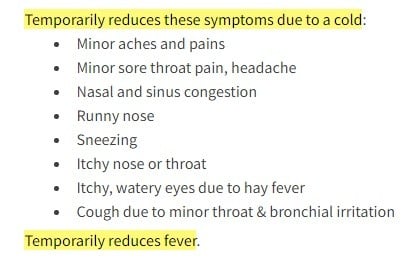
Political Ads
Political advertising in the U.S. is regulated by the Federal Election Commission. It has rules on disclaimers, though these use "disclaimer" in a different sense to most industries.
In this case a disclaimer is a positive statement that reveals information, usually about who is behind an advertisement. In effect, you are disclaiming possible misinterpretations such as that the candidate featured in the ad paid for its production when this is not the case.
The key disclaimers required are:
- You must say if the candidate or an authorized committee paid for the advertisement.
- You must say if the candidate or committee authorized the advertisement but somebody else paid for it (and, if so, who).
- You must say if the advertisement was neither authorized by, nor paid for, by the candidate or their committee. You must also say who did pay for it.
The FEC also has specific rules about how to display these disclaimers. We'll detail these later in this article.
This ad by The Conservative Caucus shows who paid for it and confirms no candidate paid for or authorized it:

Next we'll look at one of the most commonly seen types of advertising that's also highly regulated: Affiliate ads.
Affiliate Advertising: FTC Rules

The FTC requires a disclaimer whenever you promote a product or service and receive something in return. Here are some of the key points that will help you decide if this requirement affects you:
- The general principle is that a disclaimer is necessary where the information could affect how much credibility your audience puts in your comments about the product or service.
- It doesn't matter whether you received the product or service itself (such as a free sample to review), a direct financial payment, or anything else.
- You need a disclaimer if there is any connection between you getting something and you mentioning a product or service. It doesn't matter whether or not you only got something on condition that you gave a positive review to the product or service, or even on condition that you mentioned it all.
- It doesn't matter whether or not you are a professional journalist or content creator.
You also need a disclaimer if you have any relationship to the manufacturer or retailer of a product or service that you mention. This could include being friends or family, or having worked for the company even if that doesn't relate to the product or service.
Fitnancials makes clear the post includes affiliate links. This disclaimer gives the reader extra information to decide how much weight to put on positive comments about the linked products and services:
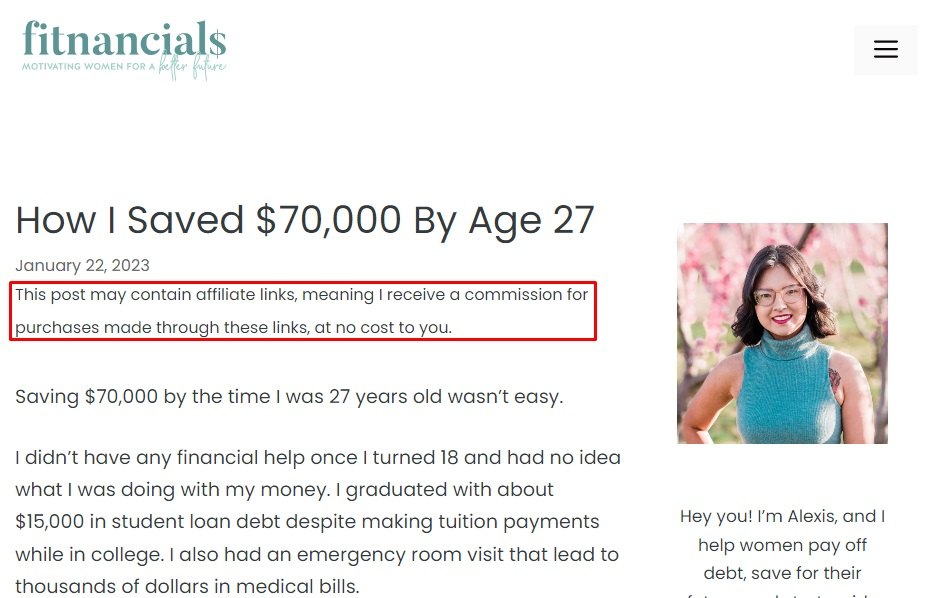
Now that you have some guidance on different types of advertising disclaimers, let's check out some different ways to display the disclaimers.
How to Display Advertising Disclaimers

As we'll detail, some laws and regulations have specific rules about how you must display required disclaimers. As a general principle, disclaimers should be:
- Clearly written
- In an easily legible typeface and size
- Located close to any relevant claims or statements in the advertisement itself
In the absence of any specific display rules, a good principle is that the greater the risk of somebody making an incorrect assumption (and the greater the consequences), the more prominent you should make the disclaimer.
FTC Rules
The FTC rules say you must "clearly and conspicuously" display disclaimers in advertisements whenever the information in the disclaimer could affect a purchasing decision. In particular, you must not:
- Put the disclaimer in an obscure location
- Put the disclaimer in a small type in a footnote
- Put the disclaimer in a lengthy passage of text
Any disclaimers that affect the costs of the product or service should be close to any advertised price.
With online advertisements, disclaimers affecting costs must be on the same page, and near to, the advertised price.
Other disclaimers can be put on another page or a pop-up window only if you do all of the following:
- Prominently display the link to the disclaimer, preferably near the specific claim or information to which it relates.
- Label the link with a clear summary of the key points of the disclaimer.
- Include the disclaimer as close as possible to the top of the linked page or pop-up window. Do not make users scroll past unrelated text to get to the disclaimer.
This Xfinity disclaimer is close to the stated price, is a reasonably clear size, and includes important qualifications to the headline price:
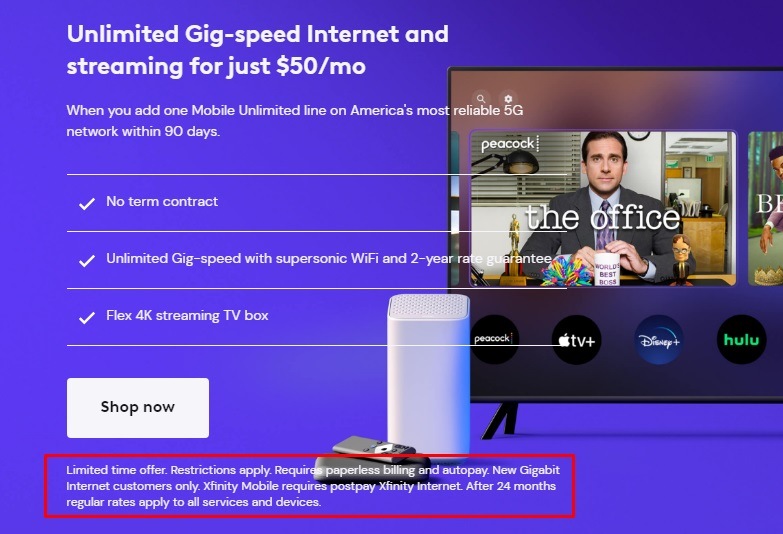
FEC Rules
The general display rule for printed political advertisements is that the disclaimer must be inside a marked box and the text must be "clearly readable." FEC guidelines say the best way to do this is to use 12 point black text on a white background.
Television and radio ads come under special rules and you should check the current situation when producing such an ad.
This ad for Charles Booker includes a disclaimer showing who paid for it:
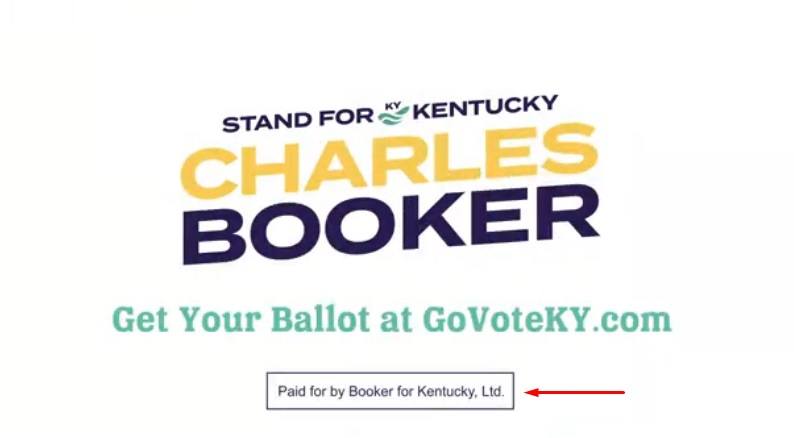
YouTube Rules
YouTube requires you inform it of any commercial relationship (paid product placement, endorsement or sponsorship) in the following way:
- On a computer, sign in to YouTube Studio
- From the left-hand section, select Content
- Click the video that you'd like to edit
- Select More options
- Select the box next to 'My video contains paid promotion like a product placement, sponsorship or endorsement'
- Select Save
YouTube will then automatically display an overlaid message at the start of your video to highlight the commercial relationship.
This Proper DIY video includes the YouTube overlaid message in the upper left corner:
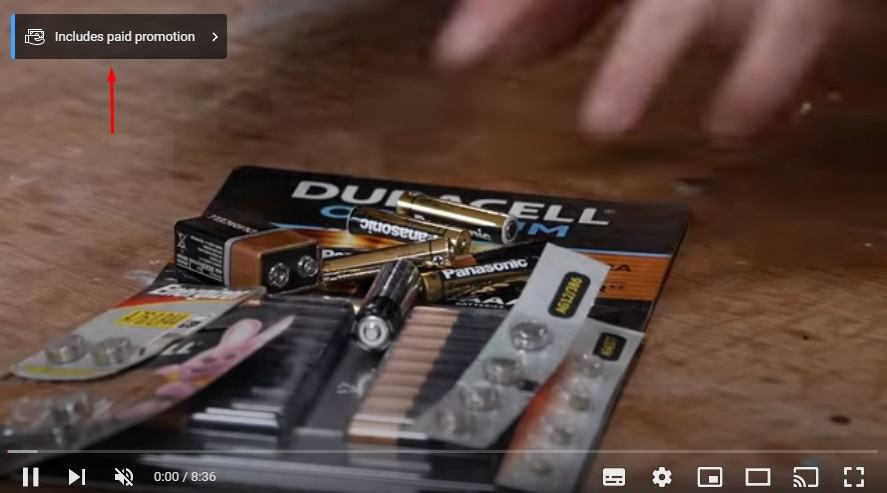
Summary
Let's recap what you need to know about advertising disclaimers.
An advertising disclaimer aims to stop people making incorrect assumptions. It's particularly useful if there's a strong risk people would make the assumption without the disclaimer.
The FTC says advertising must not be deceptive. A disclaimer can give the audience additional information and context to avoid misleading them.
When complying with the FTC rules you must display disclaimers clearly and prominently, preferably as close as possible to the related statement or price in your advertisement.
- A "results not typical" disclaimer is no longer sufficient when making claims about results. You must always give actual examples of typical results (or ranges of results) alongside any examples that are eye-catching but not typical.
- Medical advertising claims require scientific evidence. This includes disclaimers for any qualifications or loopholes that put the claims in context.
- Political ads must say who paid for the ad and (if different) who authorized it. This must be in clear text inside a box.
- The FTC says publishers must include a disclaimer if they receive anything in return for mentioning a product or service, or if they have any relationship with the manufacturer or retailer. This rule is not restricted to paid advertisements.
YouTube has a mandatory declaration box in its video settings for commercial relationships. You must tick this box if:
- You have been paid to include a brand, message or product in the video ("paid product placement") or before, after or alongside the video ("sponsorship")
- You have been paid to deliver a message as if it were your opinion ("endorsement")
